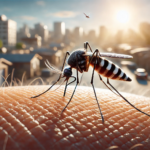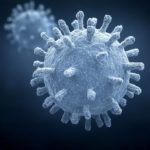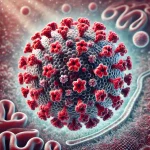As winter returns with its familiar chill, so do seasonal illnesses, but this year, they are resurfacing with greater intensity and complexity. Alarming reports show a sharp rise in norovirus outbreaks and other stomach infections, raising concerns about their connection to COVID-19. Could this combination of viral threats create a perfect storm for public health? This in-depth analysis explores how these two powerful viruses may interact, why winter amplifies their spread, and what you can do to protect yourself.
Understanding Norovirus: The Winter Vomiting Bug
Norovirus is a highly contagious virus known for causing acute gastroenteritis—an inflammation of the stomach and intestines that leads to severe vomiting, diarrhea, and abdominal pain. Often dubbed the “winter vomiting bug”, norovirus thrives in colder months, spreading rapidly in crowded environments such as schools, nursing homes, and cruise ships.
Key Facts About Norovirus:
- It is the leading cause of stomach flu worldwide.
- The virus can survive on surfaces for days, making it extremely contagious.
- Only a small amount of the virus is needed to cause infection.
COVID-19 and Norovirus: A Dangerous Duo?

Although COVID-19 is primarily a respiratory virus, research has uncovered unsettling evidence that it can also cause gastrointestinal symptoms, blurring the lines between typical respiratory infections and stomach viruses. Recent studies suggest a potential overlap in how norovirus and COVID-19 spread and impact the immune system, especially during the winter months.
Shared Symptoms Raise Alarm:
- Both viruses can cause nausea, vomiting, diarrhea, and fatigue, making it difficult to distinguish between them without proper testing.
- In some cases, COVID-19 patients have reported prolonged gastrointestinal distress, similar to severe norovirus infections.
Weakened Immunity After COVID-19:
- COVID-19 may temporarily weaken the immune system, making individuals more vulnerable to other infections, including norovirus.
- The disruption of regular health routines during the pandemic may have led to lower immunity against seasonal viruses.
Why Winter Fuels the Spread of Viruses
The winter season creates the perfect conditions for viral outbreaks. Colder temperatures drive people indoors, increasing close contact and the risk of virus transmission. Additionally, the lack of humidity allows airborne particles to linger longer, making it easier for viruses to spread.
Key Factors Driving Winter Infections:

- Close Contact Indoors: People gather in enclosed spaces, enhancing virus spread.
- Dry Air: Low humidity dries out nasal passages, making it easier for viruses to infect the body.
- Weakened Immune Systems: Shorter days and less sunlight can reduce vitamin D levels, weakening immune defenses.
The Overlooked Impact of Norovirus in a Pandemic World
With the focus on COVID-19, other dangerous viruses like norovirus have flown under the radar. However, the effects of a widespread norovirus outbreak can be devastating, particularly for vulnerable groups such as the elderly and immunocompromised individuals.
Severe Health Consequences:
- Dehydration from vomiting and diarrhea can lead to hospitalization.
- Rapid transmission in healthcare settings poses a significant risk to high-risk patients.
Economic Burden:
- School closures, workplace absenteeism, and healthcare costs skyrocket during severe outbreaks.
- The financial impact of managing simultaneous outbreaks of COVID-19 and norovirus could strain healthcare systems.
How Norovirus and COVID-19 Might Interact
The interaction between norovirus and COVID-19 is still being explored, but several potential connections raise concerns:
- Increased Co-infections:
People infected with COVID-19 may be more susceptible to contracting norovirus due to weakened immunity. - Longer Virus Survival:
Both viruses are known for their resilience on surfaces, which could increase the likelihood of surface-based transmission during colder months. - Strain on Healthcare Systems:
Hospitals overwhelmed by COVID-19 cases may struggle to contain simultaneous norovirus outbreaks, risking further spread in vulnerable environments.
As of early January 2025, both norovirus and COVID-19 have shown notable activity in the United States. Below is a summary of the reported statistics for each virus:
Norovirus:
- Outbreaks: In the week of December 5, 2024, there were 91 suspected or confirmed norovirus outbreaks, exceeding the number reported during the same week in previous years. American Hospital Association
- Annual Impact: Norovirus causes approximately 19–21 million illnesses, 109,000 hospitalizations, and 900 deaths annually in the U.S. NBC Dallas-Fort Worth
COVID-19:
- Current Trends: COVID-19 continues to be a public health concern in 2025, with periodic increases in transmission influenced by seasonal patterns and emerging variants. Respiratory Therapy Zone
- Vaccination Rates: Approximately 20.9% of U.S. adults have received a COVID-19 vaccine for the 2024-2025 season. Verywell Health
Prevention is Your Best Defense
The good news is that both COVID-19 and norovirus can be mitigated through vigilant hygiene and preventive measures. Staying proactive is crucial, especially during peak infection seasons.
Essential Prevention Strategies:

- Hand Hygiene: Wash hands frequently with soap and water, especially after using the restroom and before eating.
- Surface Disinfection: Regularly clean and disinfect high-touch surfaces.
- Stay Home When Sick: Isolate if experiencing any symptoms to prevent spreading illness.
- Vaccination: Stay up to date on COVID-19 vaccines and boosters to reduce the risk of severe infection.
- Safe Food Practices: Cook food thoroughly and wash fruits and vegetables properly to prevent foodborne illnesses.
The Future of Viral Infections: Should We Be Worried?
Emerging research suggests that climate change, global travel, and evolving viruses could lead to more aggressive and unpredictable outbreaks. Scientists are already exploring how viruses like norovirus adapt to environmental changes, potentially increasing their virulence.
What Lies Ahead:
- New Strains: Mutations in norovirus could lead to more severe or drug-resistant forms.
- Long COVID and Gut Health: Researchers are studying how lingering effects of COVID-19 may permanently alter gut microbiomes, making individuals more susceptible to stomach viruses.
- Healthcare Adaptation: Hospitals must prepare for complex viral outbreaks that involve multiple pathogens at once.
Practical Tips to Strengthen Your Immune System This Winter
Protecting yourself against both norovirus and COVID-19 requires not only hygiene but also a strong immune system.
Simple Ways to Boost Immunity:
- Eat Immune-Boosting Foods: Focus on foods rich in vitamin C, zinc, and probiotics.
- Stay Hydrated: Dehydration weakens immune defenses, so drink plenty of water.
- Get Enough Sleep: Aim for at least 7-8 hours of quality sleep to allow your body to repair and strengthen.
- Exercise Regularly: Moderate physical activity enhances immune function.
- Manage Stress: Chronic stress weakens immunity, so practice relaxation techniques like meditation.
Conclusion: A Call to Vigilance
The convergence of norovirus, stomach infections, and COVID-19 is a stark reminder that infectious diseases remain a constant threat, especially during winter. Understanding their connection is vital for protecting ourselves and our communities. By practicing diligent hygiene, strengthening our immune systems, and staying informed, we can confront these viral threats head-on. As viruses continue to evolve, so must our strategies to prevent, detect, and combat them. Stay proactive, stay healthy, and remember—your health is your greatest asset.
















